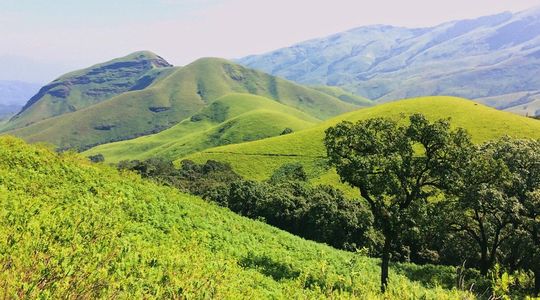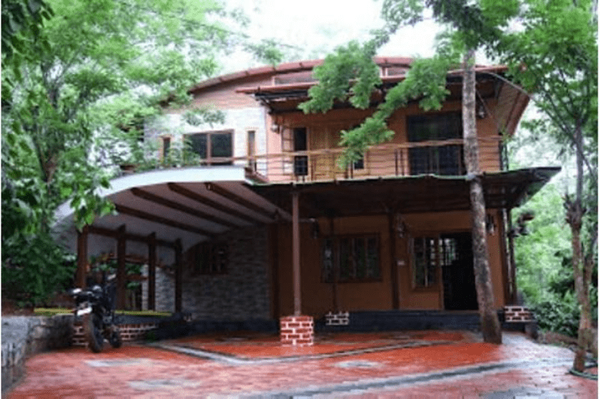Exploring the Unspoiled Beauty of Kudremukh National Park
 Palakshi Meharwal
21 Jul, 2025
8 mins read
31
Palakshi Meharwal
21 Jul, 2025
8 mins read
31

Tucked away in the heart of the Western Ghats in Karnataka, Kudremukh National Park is one of India’s most pristine ecological treasures. Often overshadowed by more commercialized destinations, this park remains a haven for biodiversity and eco-tourism enthusiasts. From dense shola forests and rolling meadows to mist-covered peaks and cascading waterfalls, Kudremukh offers a rare glimpse into an untouched natural world. Whether you are a wildlife lover, an avid trekker, or simply someone seeking solitude in nature, Kudremukh National Park promises an experience that is both soul-stirring and unforgettable.
A Brief Overview of Kudremukh National Park
Established in 1987 and spanning over 600 square kilometers, Kudremukh National Park lies within the Chikkamagaluru district of Karnataka. The name "Kudremukh" translates to "horse face" in Kannada, inspired by the unique shape of one of its peaks. This national park is part of the globally recognized Western Ghats Biodiversity Hotspot and has been designated as a UNESCO World Heritage Site due to its ecological significance.
Biodiversity and Wildlife: A Living Museum
One of the key highlights of Kudremukh is its remarkable biodiversity. The park serves as a critical habitat for a range of endemic and endangered species. It is home to mammals such as the lion-tailed macaque, Malabar civet, gaur, sambar deer, and leopards. Bird enthusiasts can expect to encounter species like the Malabar trogon, imperial pigeon, and great hornbill fluttering through the dense forest canopies.
In terms of flora, the park boasts a variety of tropical evergreen forests, montane grasslands, and shola ecosystems. Some of the rare tree species include Mesua ferrea and Calophyllum. The diversity of plant life sustains a rich ecosystem that supports countless smaller organisms, fungi, and insects.
Kudremukh Trekking Trails: A Gateway to Tranquility
The Kudremukh Peak Trek is among the most popular and scenic routes in South India. Starting from the Mullodi village, this moderately challenging trail takes trekkers through a mix of grasslands, forest patches, and river crossings. At an altitude of about 1,894 meters, the peak offers panoramic views that stretch across valleys and neighboring hill ranges.
What sets Kudremukh apart is the absence of commercialization along the trail. There are no permanent shops or shelters, which helps preserve its raw appeal. Trekkers are required to obtain permission from the Forest Department, ensuring that the ecosystem remains protected from mass tourism.
Aside from the main peak, other trails like the Kurinjal Peak trek and Gangadikal trek provide alternative routes for those seeking less-traveled paths.
Rivers, Streams, and Waterfalls
Kudremukh is also a vital watershed region. Three significant rivers — the Tunga, Bhadra, and Nethravathi — originate from the park. Their presence supports not only the lush vegetation but also communities downstream that depend on these rivers for agriculture and daily needs.
Waterfalls like Kadambi Falls and Hanuman Gundi Falls, which lie within the park's vicinity, add to its natural allure. These cascades are best visited during the monsoon and post-monsoon months when they are in full flow, offering a refreshing experience after a day of trekking.
Conservation Challenges and Efforts
Like many protected areas across the globe, Kudremukh faces several environmental threats. Illegal mining, deforestation, and encroachment had once posed serious risks to the region’s integrity. Thankfully, mining activities were ceased by a Supreme Court order in 2005, and since then, there has been a strong push towards sustainable eco-tourism and conservation.
Efforts led by the Karnataka Forest Department, in collaboration with local NGOs and tribal communities, have played a crucial role in safeguarding the region’s biodiversity. Regular patrolling, afforestation drives, and community education are part of ongoing initiatives to maintain the park's ecological balance.
How to Visit Kudremukh National Park
Best time to visit: The ideal time to explore Kudremukh Park is between October and February. The post-monsoon season leaves the landscape lush and vibrant, while the weather remains cool and pleasant for trekking and wildlife spotting.
How to reach:
- By road: The nearest town, Kalasa, is about 10 km from the park and well-connected to Chikkamagaluru and Mangalore.
- By rail: The closest railway stations are Mangalore and Chikkamagaluru.
- By air: Mangalore International Airport is approximately 100 km away and offers domestic and limited international connections.
Accommodation is limited to eco-lodges, homestays, and forest guesthouses in nearby villages like Mullodi and Samse. These provide basic yet comfortable amenities and offer a chance to engage with the local Malnad culture.
Responsible Tourism and Visitor Guidelines
If you plan to explore Kudremukh, it’s crucial to follow sustainable travel practices. Visitors are encouraged to carry their waste back, avoid using plastic, and not disturb the wildlife. Guided treks with registered local operators help ensure safety and adherence to conservation rules.
Final Thoughts
Kudremukh National Park stands as a testament to India’s natural richness and ecological resilience. It’s a place where nature flourishes with minimal human interference — a sanctuary for rare species and a paradise for nature lovers. In an age where over-tourism threatens the soul of many destinations, Kudremukh remains refreshingly untouched, offering a deeply enriching experience to those who venture into its emerald embrace.
Written By:
Palakshi Meharwal



Hotels at your convenience
Now choose your stay according to your preference. From finding a place for your dream destination or a mere weekend getaway to business accommodations or brief stay, we have got you covered. Explore hotels as per your mood.


